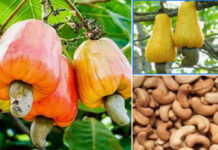Ghana risks facing a tomato shortage as the former controls 90 percent of the commodity’s imports into the country.
As Burkina Faso battles with one of the worst growing seasons in recent years, Ghana risks facing a tomato shortage as the former controls 90 percent of the commodity’s imports into the country.
The growing season in Burkina Faso, over the last two years, has been facing challenges owing to extremely sparse rainfall in around 20 of the country’s 45 provinces – with experts predicting that the situation could persist, and even worsen in the near-future.
Data from the Ghana Incentive-Based Risk-Sharing System for Agricultural Lending (GIRSAL) indicate that Ghana currently imports 90 percent of its fresh tomatoes from Burkina Faso.
Tomatoes, according to GIRSAL, currently have a national consumption demand of 800,000 metric tonnes per annum. Local production however continues to slump, unable to meet half of consumption targets.
Equally, the tomato processing industry in Ghana remains small and relies heavily on imports of raw materials – concentrate and additives.
Meanwhile, processing plants installed in Pwalugwu, Techiman and Wenchi have all been shut down due to unavailability of quality raw materials at affordable prices. Ghana is estimated to consume more than 100,000 metric tonnes of tomato mix annually, apart from the fresh fruit.
Why situations in Burkina Faso may impact Ghana.
The Burkina Faso Ministry of Agriculture has said almost three million people are suffering from food insecurity, as new weather patterns have already turned 50,000 hectares of farmland into barren fields.
Last year, Burkina Faso experienced a 461,000-tonne grain and cash crop shortage countrywide.
Government figures have indicated that more than 450,000 hectares of arable land lay fallow in 2021 owing to rising levels of violence.
In June this year, the International Committee of the Red Cross (ICRC) in a statement said: “Thousands of displaced people in Burkina Faso, facing both a major food crisis and an upsurge in armed violence, have come to rely entirely on government and humanitarian organisations.
They are forced to abandon their crops and means of livelihood; these people are now extremely vulnerable”.
The Red Cross however noted that over 32,000 people in the Est, Nord and Sahel regions – both residents and displaced people – were given crop seedlings, notable among which were tomato, onion, millet, sorghum and cowpea seeds in order to grow cash crops at the subsistence level.
These happenings, stakeholders have hinted, must be a guiding path for Ghana to begin the right processes to enhance domestic production with deliberate attempts to reduce imports.
Key issues remain with production in Ghana Low yields continue to remain one of the major challenges for tomato production in Ghana, as most farmers cultivate less than 10 metric tonnes per hectare against the potential of 20 metric tonnes per hectare.
Besides, poor agronomic practices, lack of varieties for commercial agro processing, as well as farmers still planting local varieties – typically with high water content, many seeds, poor colour and low brix level – have all been identified as key production setbacks.








